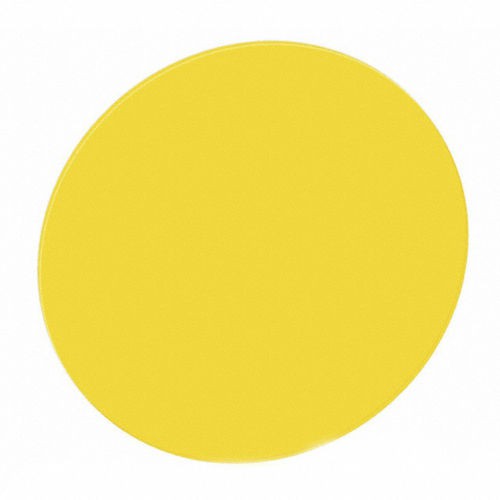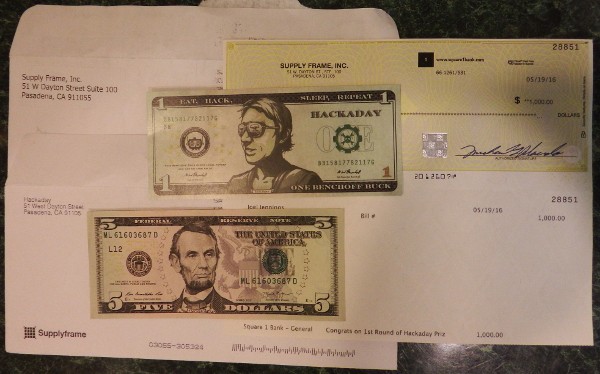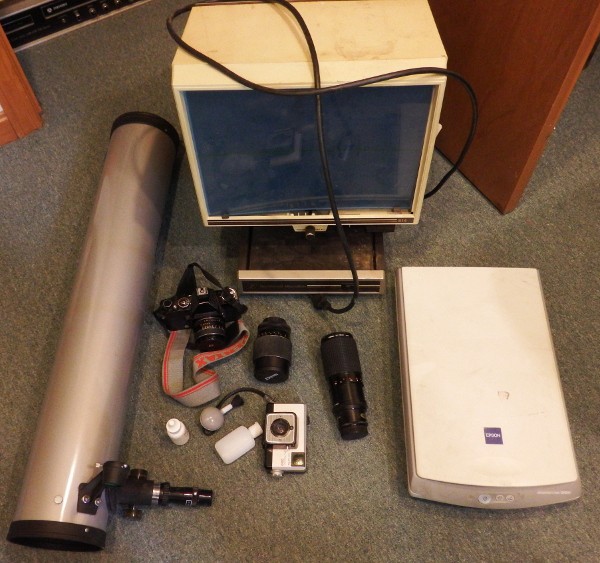Ah, summer. The sun is shining, the smell of freshly cut grass, flowers are in bloom... And it's hard to get any indoor work done.
We got prize money from Hackaday!
Woot!
We've been purchasing little things throughout the project ($5 here, $5 there), and this will go a long way towards reimbursing everyone in the project.
Thanks, Hackaday!
CAD Designer is temporarily out of action
One of our members is in the hospital, which 'kinda of puts a crimp in our development because he's the CAD expert and made a bunch of awesome designs which we can't get at for the moment.
He should be getting out tomorrow, so we should have some more designs maybe next week.
Spinthariscope design doesn't work

If you put a radioactive element next to a phosphor screen, you'll see small flashes of light. This is called a "spinthariscope", and is used to detect and measure radioactivity.
A white LED works by shining a blue (or borderline UV) LED onto a phosphor, which then lights up "white". The phosphor is the yellow dot you see on white LEDs. I got a big one from eBay.
I figured the LED phosphor might serve as a spinthariscope phosphor, and you could scavenge one from an old LED light bulb, but apparently the phosphor is of a different material.
Scavenging glass lenses works
One of the goals of the project is to build a high quality kit, something that you could use to learn optics as a kid, do experiments in high school, perhaps do research in college, and then give to your own children when they are old enough.
To that end, we're trying to use glass lenses, filters, and so on. Plastic lenses get scratched, fog up, and crack from sunlight. There are any number of cheap plastic optics kits you can buy, and they inevitably end up in yard sales or at the dump.
Another goal of the project is that it should be inexpensive, and glass lenses are not in that category. A glass lens on eBay will cost around $10 apiece, and you need six or so to do experiments.
For the project we are recommending that the student scavenge parts wherever possible. Check craigslist, yard sales, flea markets, and the local dump, look for the old slide projector, film projector, cameras, and so on. Is it possible to scavenge glass lenses?
As it happens, it's pretty easy.
In two weeks without any effort, just keeping an eye out for optics in my daily routine, I managed to collect:
- A microfiche reader (lenses, target)
- A scanner (prisms, front surface mirrors)
- Two camera lens attachments (lenses, irises)
- Two cameras (lenses, mirror)
- A telescope (eyepiece, eyepiece lenses, barlow lens, mirrors)
The only thing I actually paid for was the telescope ($10), and that was only because I thought it would make a good project piece.
(It turns out that 4.5" telescopes are useless for astronomical observations, so I dropped that idea. More lenses for the kit!)
Enough glass lenses and mirrors for 3 kits, with lenses left over!
I live in cow-town New Hampshire, so I expect most students will be able to scavenge glass lenses with little or no effort.
I'm planning on disassembling everything and documenting the process (and noting what you would hope to find), so people will know ahead of time what to look for.
 Peter Walsh
Peter Walsh

Discussions
Become a Hackaday.io Member
Create an account to leave a comment. Already have an account? Log In.